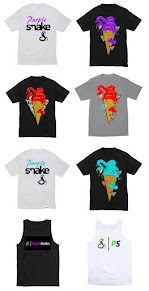In 2015, Lamar Odom was the most googled person in the world. Not for his basketball skills, but for his personal life — especially his struggle with addiction, which almost led to his death. On a recent episode of People’s Party with Talib Kweli, he told host Kweli that at his lowest point — the night he nearly died in a Nevada brothel — he suffered from 12 strokes and six heart attacks.
Kweli and Odom discussed mental health and the stigmas around those discussions for black men, what it was like for Odom to navigate his struggles with addiction in the public eye, and how he turned to ketamine to help manage his mental health.
“It can help with addiction, any falsehoods you have that’s holding you back in life,” Odom explained. This reference to ketamine is sure to catch the ears of listeners. For most people, ketamine has certain connotations as an illicit club drug. So how is ketamine being used as a tool to help with depression and mental health?
We break it down.
What is ketamine?
Officially speaking, according to the National Library of Medicine, ketamine is a “general anesthetic used largely for short term diagnostic and surgical procedures, but which has been limited in use because of its psychological side effects including vivid hallucinations, agitation, and confusion.” You’d most commonly see it used at veterinary clinics, specifically for cats, due to its side effects.
But for anyone who grew up with D.A.R.E. or Just Say No, ketamine is best known as Special K — an illicit club drug that also doubles as a date rape drug thanks to its quick-acting effects. When used recreationally, ketamine “distorts perceptions of sight and sound and makes the user feel disconnected and not in control.” Its hallucinatory effects are relatively quick-lasting compared to, say, acid or mushrooms.
How is it being used to manage depression?
Researchers have been excited by ketamine’s potential use as an antidepressant for at least 20 years, but they’re just now starting to understand how it works and why it’s so effective. According to Scientific American, ketamine works in two key ways: it “first induces changes in brain circuit function, improving ‘depressed’ mice’s behavior within three hours, and only later stimulating regrowth of synapses.”
In other words: there’s an immediate sense of relief and there are long-term benefits to the drug.
According to health journalist Alice Levitt, who tried ketamine after increasingly intense suicidal ideations, it’s also much more effective than other “last resort” treatments, like electroshock therapy: “About 70 to 85 percent of patients with severe depression who try ketamine treatment say it’s effective, compared with 58 to 70 percent of ECT patients.”
That said, the antidepressant effects of ketamine treatment wear off in only weeks or months. However, the observed regrowth of synapses has given researchers hope that they can now figure out how to extend ketamine’s antidepressive effects as they learn more about both ketamine and the human brain.
Is the depression treatment the same drug people use recreationally?
That depends. You can use the same professionally-administered ketamine that is most commonly used in veterinary practices; it’s administered intravenously in a clinical setting. That said, per the National Library of Medicine, the anti-depressive “effects are seen in concentrations ten times lower than the needed concentration for anesthetic proposes.” So you wouldn’t take the same dose you’d take, say, if you were using it as an anesthetic or even as a recreational drug.
Or you can use esketamine, the first ketamine-based antidepressant, a nasal spray that was approved by the FDA in March 2019. Researchers believe this is going to be a “game changer” for individuals with treatment-resistant depression.
June 17, 2019 at 08:55AM via ThePurpleSnakeEra















